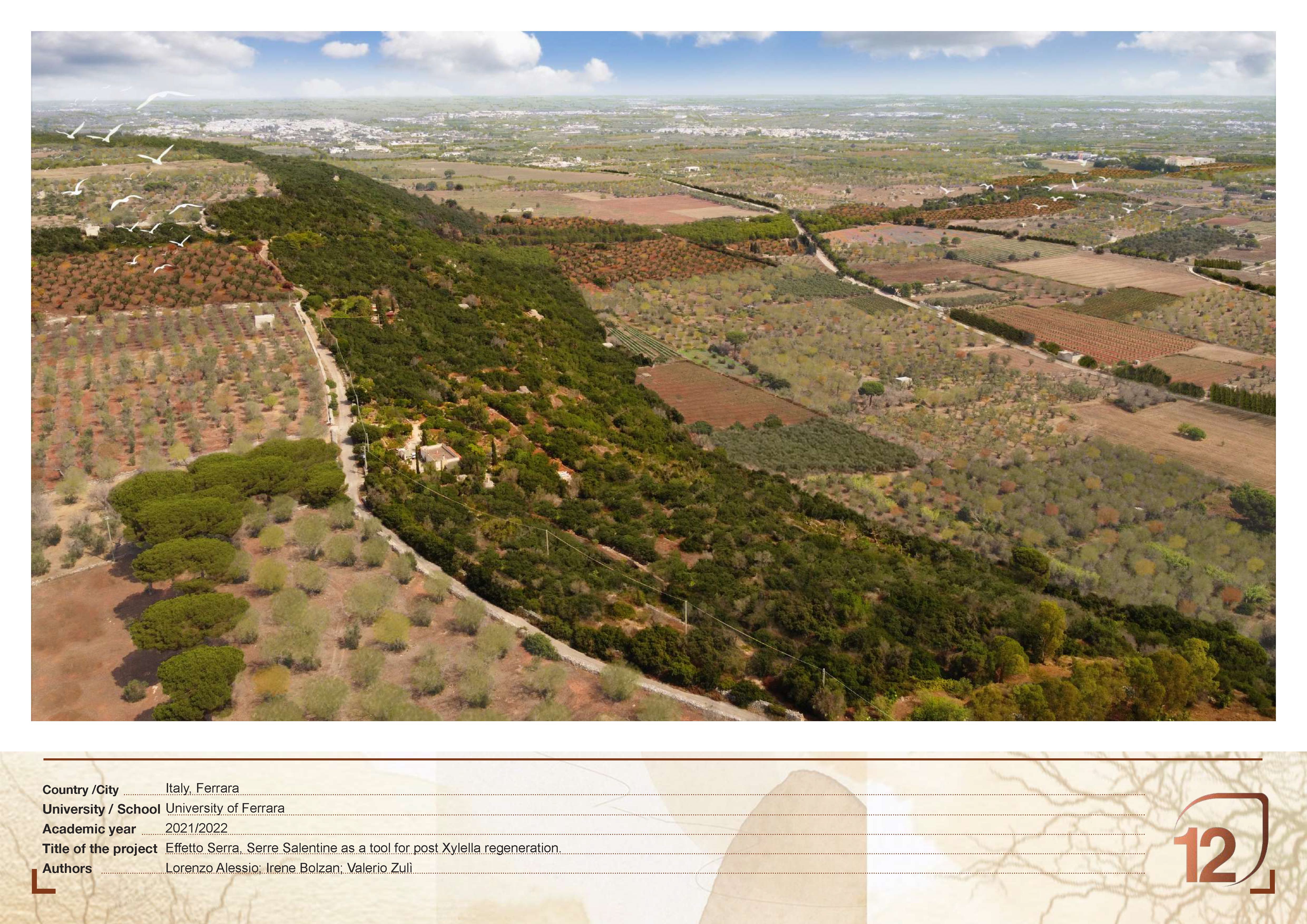
Effetto Serra, Serre Salentine as a tool for post Xylella regeneration.
Landscape architecture and infrastructure
University of Ferrara
In less than a decade Salento, the extreme part of the Apulia region in Italy, has tested the transformation of its majestic olive trees into wooden skeletons of death. How to react to the presence of a bacterium that irreversibly disrupts the features of a landscape? The project responds to the desire to regenerate an area devastated by the Olive Quick Decline Syndrome (OQDS or CoDiRO) - caused by the bacterium Xylella - thus progressively compromised by the phytosanitary crisis and abandoned. The current state presents a fragile rural system in the process of desertification, aggravated by monoculture and drought, which requires a green infrastructure capable of activating new processes of agroforestry aimed to restoring the richness of the subsoil; The project’s goal is to create a new, more resilient and sustainable landscape model that, through an increase of biodiversity in the area, is able to reactivate the countryside and better manage available resources. The strategy envisages the insertion of an ecological framework that branches off into the agricultural landscape, composed of native vegetation or crops resistant to Xylella, capable of fragmenting the monoculture and favouring the conveyance of the benefits of widespread biodiversity. The decisive factor is undoubtedly a more adequate water management, with which a constant water supply can be ensured for new reforestation and cultivation.
